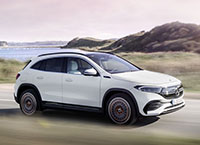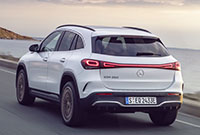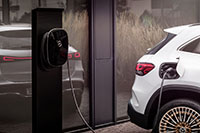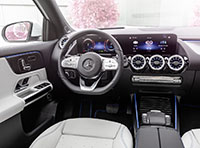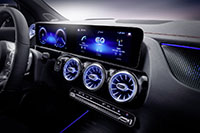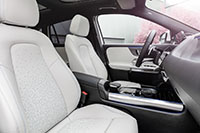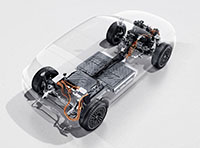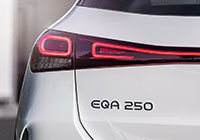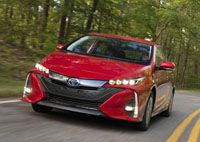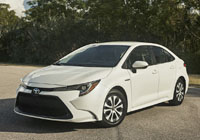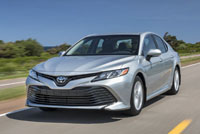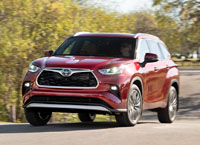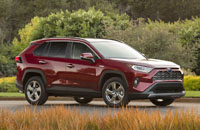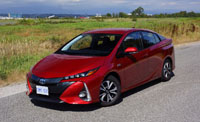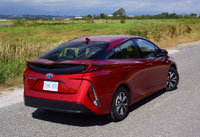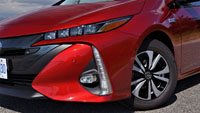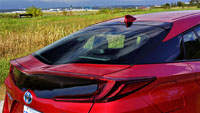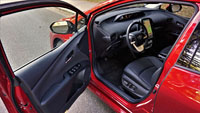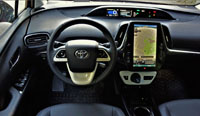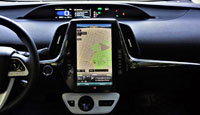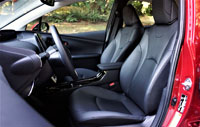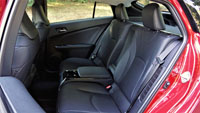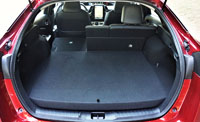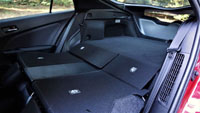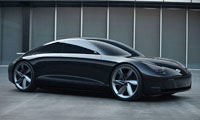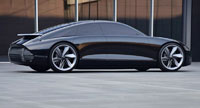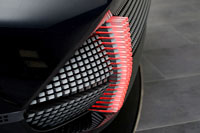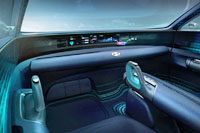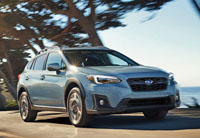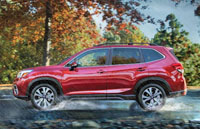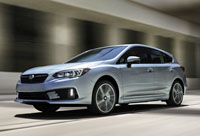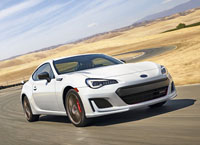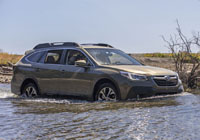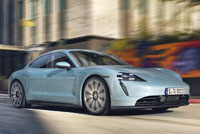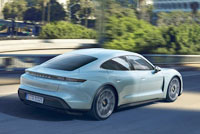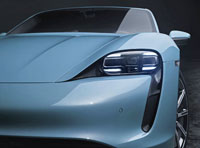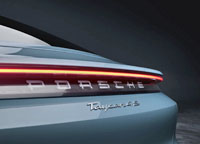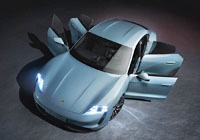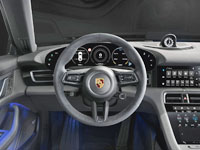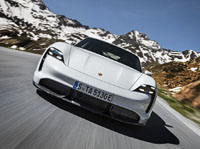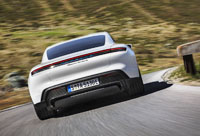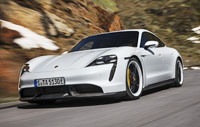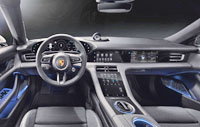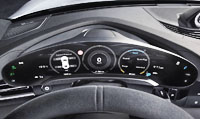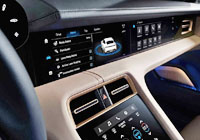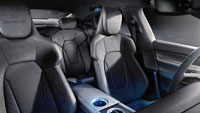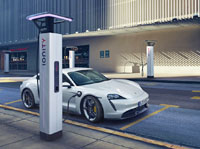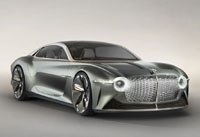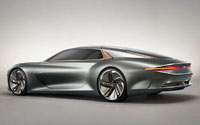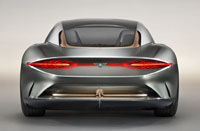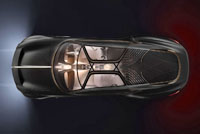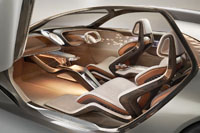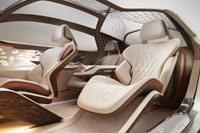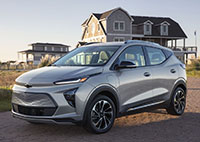
Chevy has updated its Bolt EV plug-in electric car for 2022, and along with subtly reworked styling, a revised interior and more tech, the bowtie brand will add a second crossover-style variant dubbed EUV, to make the model appeal to more would-be buyers.
The Bolt EV is positioned within the subcompact hatchback segment, with a focus on practical four- to five-passenger capability and flexible cargo hauling utility, plus highly efficient, zero-emissions, battery-powered mobility. Despite all of this clean, green and easy-to-live-with pragmatism, today’s Bolt is actually a great deal more fun to drive than most would imagine before stepping inside, thanks to more than ample torque from its potent electric motor.
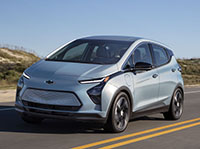
In an interesting move, the outgoing Bolt will lose its roof rails as the new EUV takes over the SUV-style family role, or at least the version shown in GM’s press photos shows a clean roof without any rooftop load carrying capability. The original Bolt not only included a set of roof rails, but also featured a slightly taller ride height and black body cladding around its lower extremities, all in crossover-like fashion. The new 2022 Bolt will carry forward with the latter conventions, while the EUV’s roof rails are more prominent and (at least in the trim level shown in photos) black, adding to its SUV-like presence.
What’s more, the new Bolt EUV adds length, width and height over the regular model, now measuring 161 mm (6.3 in) more from nose to tail, 5 mm (0.2 in) extra from side-to-side, with 10 mm (0.4 in) of additional track, plus 5 mm (0.2 in) add from the base of its tires to the top of its just-noted roof rack. Most importantly, its extended length results in 75 mm (3 in) of extra wheelbase, allowing the EUV to increase rear legroom by 78 mm (3.1 in), but strangely the larger model’s cargo volume decreases slightly, from 470 litres (15.6 cu ft) behind the rear seats and 1,614 litres (57.0 cu ft) when folded down, to a respective 462 and 1,611 litres (16.3 and 56.9 cu ft).
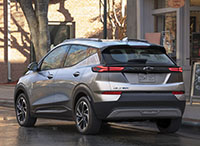
Odd yet again, despite the EUV increased height, its headroom drops by 0.2 mm (0.1 in) front to rear, plus it forgoes another 24 mm (0.9 in) in front when the optional glass sunroof is chosen. Second-row shoulder room is reduced slightly as well, but hip room grows by a similarly hair-like measurement yet shrinks a bit more in back, thus the upgrade to a larger EUV seems to only benefit rear passenger legroom, which was an issue that has reportedly caused complaints from first-generation Bolt owners. On the positive, the EUV’s curb weight only increases by 41 kg (90 lbs).
The extra poundage probably won’t be felt by EUV buyers, however, being that both Bolts will continue to zip along faster than anything else in their subcompact categories. This in mind, plus factoring in the regular Bolt’s exemplary 417 km (259 miles) range, caused no reason for Chevrolet to improve the power unit, although the same battery/motor setup in the EUV reduces range by about 15 km (9 miles) to 402 km (250 miles).
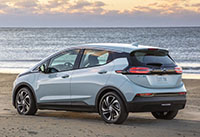
The powertrain in question is GM’s permanent magnetic electric drive motor and 65-kWh, 288-cell lithium-ion battery, which combine for a stealthy yet healthy 200 horsepower and 266 pound-feet of torque. Both Bolt models are front-wheel drive, similar to a number of other small crossover SUVs, so don’t take them onto a beach for photos like GM did for the press images.
Chevy makes DC fast charging capability standard, which allows for approximately 160 or 150 km (100 or 95 miles) of EV or EUV range respectively after 30 minutes of charging, while a special dual-level charge cord makes it possible for owners to hook up to a 240-volt charging station or 120-volt household-style three-prong outlet.
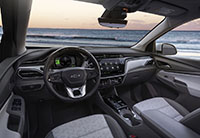
Those familiar with today’s Bolt will notice that Chevy left the biggest changes to their interiors, where both EV and EUV models feature more horizontally themed layouts for a wider visual effect. The new design is more conventionally laid out as well, replacing the pod-type centre stack with one that flows downward in a more traditional style, ending in a conventional lower console. The same standard 10.2-inch touchscreen remains, large for the subcompact category, while the infotainment graphics have been given a refresh. Apple CarPlay and Android Auto smartphone connectivity are still standard, with a navigation system optional, but most will probably be happiest to see a new standard wireless charging pad. Chevy saw no need to change the Bolt’s fully digital primary gauge cluster, however, which looks exactly the same as that in today’s model.
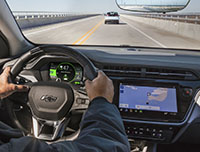
Together with the current Bolt’s less than ideal rear legroom, owners also complained about seat comfort and interior materials quality, which they deemed substandard for the many asked. While loading the Bolt up with an impressive list of kit, including that big infotainment display just noted, the car’s near $45k price point justifies higher quality surface treatments. Thus, the new 2022 Bolt models will get their just desserts, with softer surfaces in key areas, even including what appear to be padded leatherette on the dash. Chevy seems to have improved some cabin switchgear too, but we shouldn’t expect anything nearing Cadillac quality.
Knobs, levers and switches in mind, the new lower centre console includes an updated gear selector that replaces the current model’s conventional shifter for a slim row of Acura/Honda-style push and pull buttons. The green-lit button nearest to the driver engages one-pedal driving, which is a more effective design than slotting the shift lever into the “L” position, a system employed for the current Bolt and other EV and plug-in models within GM’s various lineups. The paddles on the backside of the new flat-bottom steering wheel will be more familiar to Bolt (and Volt) owners. These can be used for braking assistance, plus for recharging the battery through regenerative kinetic energy.
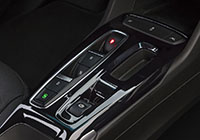
Tech in mind, the top-line EUV Premier will be first amongst Chevrolet vehicles to offer GM’s Super Cruise hands-free semi-self-driving technology, which is functional on median divided highways. The EUV Premier also features adaptive cruise control and an HD parking camera with a bird’s eye overhead view.
With respect to new Bolt family styling, the majority of onlookers should find the smaller EV better looking than its already reasonably attractive (for a subcompact hatchback) predecessor, unless a more traditional grille-filled front fascia is preferred. The new model says goodbye to the black mesh grille insert, instead replacing it with a grey-painted and patterned panel cut in an ovoid outline, with a slender slot below being the real air intake. This patterned effect does a better job creating family branding than Tesla’s Model 3, for instance, which looks like a non-branded car in an insurance commercial.
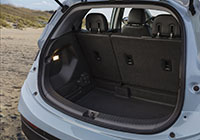
Following a theme from the first-gen Bolt and Volt predecessor, Chevy connects the new LED headlamps and side mirror housings with a thick black strip of fender trim, while the outgoing car’s traditional fog lights have been axed for more extended black trim, similar to Cadillac’s front fascia styling.
The EUV features a unique frontal design, which separates the headlight clusters and air intake-style fog lamp bezels, while providing a deeper air vent at the base of a similar solid grey grille insert. Black fender garnishes also flow into the mirror caps, while appearing to follow the black-painted window trim around the glass to a floating roof look, not unlike designs in use across the Chevrolet lineup.
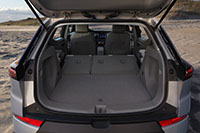
The rear designs of both Bolt models are unique in their execution, but they have a similar design theme that features clean, horizontal, LED taillights at the corners, plus loads of gloss-black composite trim in between. Large matte black bumpers underscore the look, although in a change of pace the EUV appears somewhat dressier due to aluminum-like skid plates, both in the rear and up front.
The 2022 Bolt EV will be priced from $38,198 (plus freight and fees), which is a shocking $6,800 lower than today’s 2021 Bolt EV (those roof rails must have been expensive add-ons), while the new Bolt EUV will be available from $40,198. This means that fully loaded versions should keep them below $45,000, which is as high as possible before being disqualified for government rebate programs. Today’s base Bolt LT can be had for $44,998, incidentally, so it qualifies for the most generous of rebates, whereas the better equipped 2021 Bolt Premier’s $50,298 MSRP doesn’t.
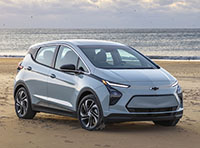
Our 2021 Chevrolet Bolt EV Canada Prices page is current showing up to $1,500 in additional incentives available, with average member savings of $2,875, while our 2020 Chevrolet Bolt EV Canada Prices page shows up to $2,000 in incentives. GM is also offering factory leasing and financing rates from zero-percent for 2022 models. To get the best deal possible, become a member of CarCostCanada, which will provide the types of information above as well as dealer invoice pricing that can help you save thousands from your next new vehicle purchase. Also, remember to download the free CarCostCanada app from the Apple Store or Google Play Store.
Magic is Electric | Bolt EUV Reveal | Chevrolet (1:30):
Behind the Magic | Bolt EUV Reveal | Chevrolet (14:25):
Super Cruise | Bolt EUV | Chevrolet (0:30):
Story credits: Trevor Hofmann
Photo credits: Chevrolet

